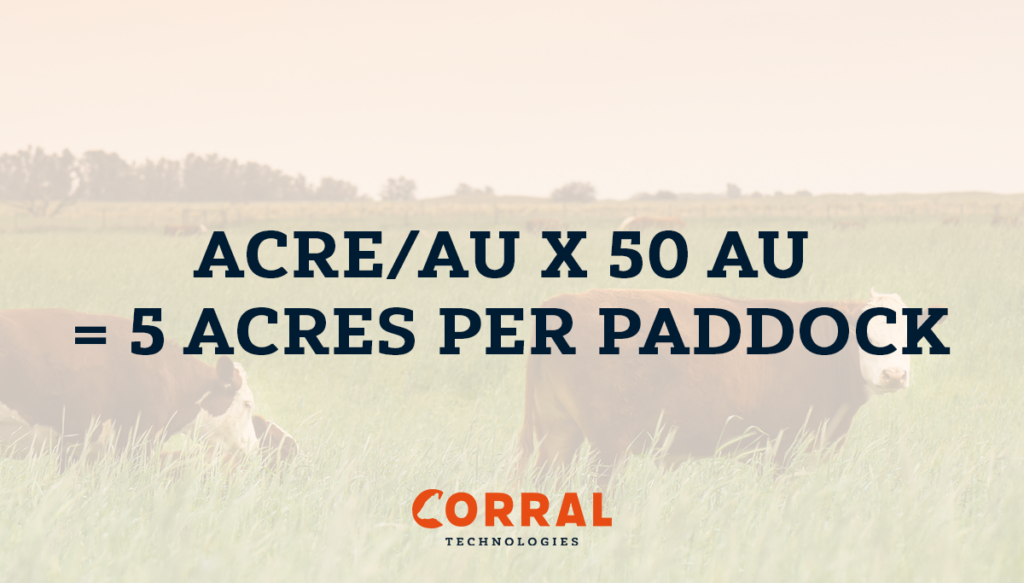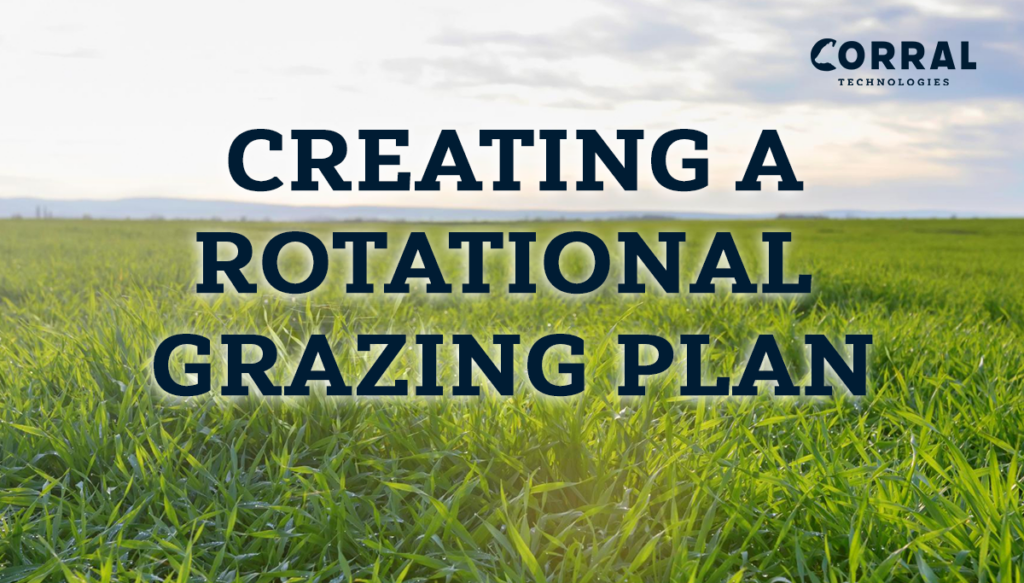This is the second of a two-part blog series, explaining best practices for creating a rotational grazing plan.
You’ve calculated the number of animal units that will be grazing in the rotation. You’ve determined the number of acres your herd will need. Now, it’s time to figure out paddock size so your acreage is evenly divided.
Paddock size is calculated by multiplying suggested number of acres per animal unit by the number of animal units in the herd.
 Example: Herd grazes each paddock for 3 days with 1,000 pounds of available pasture.
Example: Herd grazes each paddock for 3 days with 1,000 pounds of available pasture.
acre/AU x 50 AU = 5 acres per paddock
These paddocks can be created and adjusted in the Corral Tech system.
Once you know paddock size, you can estimate the number of paddocks you need. Number of paddocks depends on how many days cattle graze in each paddock and the maximum summer rest period each paddock needs to replenish forages.
Rest periods are based on growth rate, which can vary considerably throughout the season and with weather. Growth rates are influenced by soil productivity and fertility. Cattle producers should remain flexible with rotations, moving cattle to the paddocks that have reached their optimum amount of available pasture, and not following a specific pattern.
If a paddock is used for hay or silage at any point during the growing season, that will shorten the rest period between grazings, so be aware of that as you plan your rotational grazing. Some paddocks can be grazed for three or more days before requiring cattle to be moved.
Rotational Grazing Benefits

Rotational grazing can have multiple benefits for your soil and cattle herd:
- Soil health—Regularly rotating cattle prevents soil compaction that can be caused by prolonged grazing. Healthy soils that aren’t compacted infiltrate water better, reducing runoff.
- Forage quality—Ample rest periods ensures cattle are eating forages that are nutritionally rich, leading to improved herd health and increased weight gain.
- Biodiversity—Rotation reduces the opportunity for overgrazing to occur, which means that a diverse range of plant life will flourish. Increased biodiversity enhances pasture resilience.
- Pest control—Rotational grazing disrupts pest lifecycles, reducing the need to spray chemicals. Cattle on rotational grazing programs also experience fewer instances of parasites.
- Economic benefits—Healthier soils and better quality forages reduces the need to feed your cattle herd supplemental feeds, so beef producers save more money.
Where is the Grass More Green?
Knowing when grass has reached its optimal growth is key to knowing when cattle can be rotated into a new paddock. Grasses have three growth phases, including vegetative, transitional and reproductive stages. Grazing should occur during the transitional phase, because that is when grasses are most nutritious.
